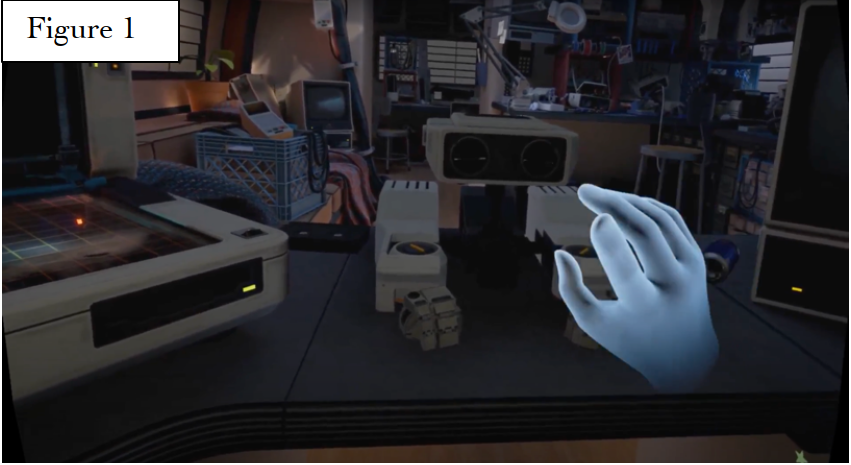
"To what extend do game designers' choices distinguish immersive games from addictive games?”
Addiction is one of the most debated topics surrounding the genre of videogames. Though its legitimacy alone is controversial and is in the process of being investigated, the World Health Organization’s (WHO) International Classification of Diseases (ICD) recognizes Gaming Disorder in the “Disorders due to Addictive Behavior” category (WHO, 2019). Research into the causes of Gaming Disorder suggests several factors, amongst which immersion. “Whilst immersion is viewed as an important and valued aspect of videogames, it is this very aspect that is involved in their addictiveness”, write Cairns and Seah in their study From Immersion to Addiction in Videogames (2008, p. 61). The same study defines the state of immersion (2008, p. 55) as the “the psychological experience of being involved in a game thanks to the opportunities it offers” (2008, p. 56), which Jamie Madigan equivalates to presence in other media (2015, p.128). It is vital for game designers, who create the aforementioned opportunities through design choices, to become aware of the extent of their impact on addictiveness when employing immersive design elements. Hence, the design choice of employing avatars instead of silent protagonists, the relation between technology and interface design, and the finiteness of games will be examined in the context of immersion and the role of game designers.
In their book, Glued to Games, Rigby and Ryan state that “not every game has equal potential to be addictive” and identify “MMOs [Massive Multiplayer Online Games] as the center of the maelstrom” (2011, p. 106). They continue by explaining that “in most MMOs, you design your own character, choose among many professions, and explore a large and varied landscape of content in the form of quests or missions. This kind of structure—also present in many RPG [Role Playing Games] games—creates a strong pull to stay engaged” (2011, p. 106). Immersion in social settings such as MMOs, which rely on players communicating with one another, is frequently referred to as social presence. According to Ron Tamborini and Paul Skalski, “social presence can be thought of as the experience of virtual social actors as though they are actual social actors” (2005, p. 4), meaning that players feel as if the virtual interactions their avatar makes with others’ are their own. This sometimes leads to altered self-perception as Madigan explains in his book Getting Gamers (2015, p. 228). Evidently, the power to change one’s appearance and to interact with according self-perception is highly appealing, and hence players may be reluctant to return to their reality. This may be a reason why immersion induces addiction in MMOs. Another type of immersion is enabled through the silent protagonists, which is a character with no voice acting nor fixed written dialogue onto which the player can project his own experience. Notable such characters are Link from The Legend of Zelda (Nintendo, 2017) or Wander from Shadow of the Colossus (SCE Japan Studio and Team Ico, 2005). Though these characters may range in expressiveness and in the extent of their characterization, they afford “a sense of presence and […] immersion into a role” (Mears and Zhu,2017, p. 2). This is an example of an immersive, but arguably less addictive means to engage players, who „understand their role in the narrative, and play as the character, rather than playing as themselves” (Mears and Zhu, 2017, p. 2). Because the player understands the division between himself and the character, his self-perception is not altered, and he does not depend on a false self-image. Naturally, because silent protagonists enable storytelling, whereas avatars enable interaction, the silent protagonist has limitations and is not directly transferrable to MMOs, suggesting that game designers are not fully able to control the immersiveness of their game within certain genres. Consequentially, it is worth discussing design choices that can distinguish a game’s reality from a player’s reality without exceeding genre limitations.
As gaming consoles become increasingly capable of reproducing reality through high resolutions and photorealistic art, user interfaces (UIs) become more indistinguishable from the game worlds. In 2014, Michael Abrash, a chief scientist for the Oculus VR, stated that “presence can only happen in a head-mounted display connected to a device capable of heavy-duty 3D rendering” (Steamworks Development, 2014, 5:40), implying that technology alone is capable of creating immersion, or feelings of being present in a virtual space, known as spatial presence (Madigan, 2015, p.130). The Oculus Touch’s demo First Contact (Oculus, 2016), which promises that players can “experience the magic of ‘presence’ in VR” (Oculus, 2016), has a minimalistic interface, as seen in Figure 1, effectively relying on the player’s spatial presence. Its UI is diegetic, defined by UI designer Marcus Andrews as “interface that is included in the game world -- i.e., it can be seen and heard by the game characters” (2010). This arguably immerses the player more successfully than a non-diegetic interface, which can, according to Andrews, manifest through elements such as head-up displays (2016), for example. These can result in the spatial presence of a player being disturbed. Since the primary purpose of interfaces should still be functionality (Adler, 2008, p.37), recent games, such as the 2016 release of Final Fantasy XV (Square Enix), have kept essential non-diegetic interface elements small and minimal, allowing players to fully immerse themselves into the exploration of the realistic-looking game world, as seen in Figure 2.

An article in the International Journal of Cyber Behavior investigated the reasons for which players excessively play online games. The study found never-ending games as one of the reasons (Hussain and Griffiths, 2014, pp. 48-49). As a result, it is possible that the infiniteness of immersion may contribute to the addictiveness of a game. “Games that end with a Boss Fight […] are less addictive than Massive Multiplayer Online Role-playing Games (MMORPGs) that go on forever”, explains Sharma, a health and science editor involved in the drafting of Press Council of India’s media guidelines on health reporting. The length of a game and whether it ends is a deliberate and controllable design choice. Similarly to the avatar and the silent protagonist, endlessness is a central part of MMOs but is arguably less fundamental to the genre than avatars, which are used for communication and identification. Though certain MMOs had endings, such as City of Heroes (Cryptic Studios and Paragon Studios, 2004), this was mostly attributed to a decline in profit and not the completion of a consistent plot. Yet, it is worth noting that the game still has a cult following (Isbister, 2016, loc 1120-1226) and that its ending did not make it any less significant within its genre, implying that many design choices were made successfully. Reformatting the MMO genre by giving MMOs endings may be a conscious choice game designer can implement to hinder players from being immersed in their games for excessive periods of time, resulting in their addiction.
An article in the International Journal of Cyber Behavior investigated the reasons for which players excessively play online games. The study found never-ending games as one of the reasons (Hussain and Griffiths, 2014, pp. 48-49). As a result, it is possible that the infiniteness of immersion may contribute to the addictiveness of a game. “Games that end with a Boss Fight […] are less addictive than Massive Multiplayer Online Role-playing Games (MMORPGs) that go on forever”, explains Sharma, a health and science editor involved in the drafting of Press Council of India’s media guidelines on health reporting. The length of a game and whether it ends is a deliberate and controllable design choice. Similarly to the avatar and the silent protagonist, endlessness is a central part of MMOs but is arguably less fundamental to the genre than avatars, which are used for communication and identification. Though certain MMOs had endings, such as City of Heroes (Cryptic Studios and Paragon Studios, 2004), this was mostly attributed to a decline in profit and not the completion of a consistent plot. Yet, it is worth noting that the game still has a cult following (Isbister, 2016, loc 1120-1226) and that its ending did not make it any less significant within its genre, implying that many design choices were made successfully. Reformatting the MMO genre by giving MMOs endings may be a conscious choice game designer can implement to hinder players from being immersed in their games for excessive periods of time, resulting in their addiction.

In 2000, Steven Poole wrote: “Videogames today find themselves in the position that the movies and jazz occupied before World War II: popular but despised, thought to be beneath serious evaluation” (2000, pp. 31-32). Even though videogames have already established themselves more within the last decades, they are still a relatively new medium crowded by controversies, criticism, and misunderstandings. With videogame addiction being a leading concern, games are under increasing scruple; Countries such as Belgium (BBC, 2019) and South Korea (Xsolla, 2020) have already taken steps to reduce addiction in players, potentially constraining videogame markets in the future. Sometimes, genre constrictions may force game designers to surpass the tipping point of addiction-inducing games. Yet, should immersion have the capacity to induce addiction, a game designer’s choices should be the balancing factor and create compromises. Such compromises may include breaking players out of their immersion at times or redefining certain elements of the already successful and profitable genre of MMOs. Raph Koster expresses in A Theory of Fun his hope for videogames to become an art form in the future (2004, pp.172-199). For games to evolve, whether it be into art, or simply a progressive and sustainable entrainment medium, game designers could keep exploring their medium’s capacity through adaptation to arising ethical and moral issues and through innovation. Videogames should create inspiring and thought-provoking content instead of putting players at risk of being numbed by videogame addiction.
